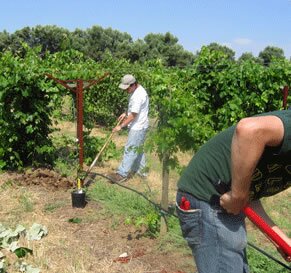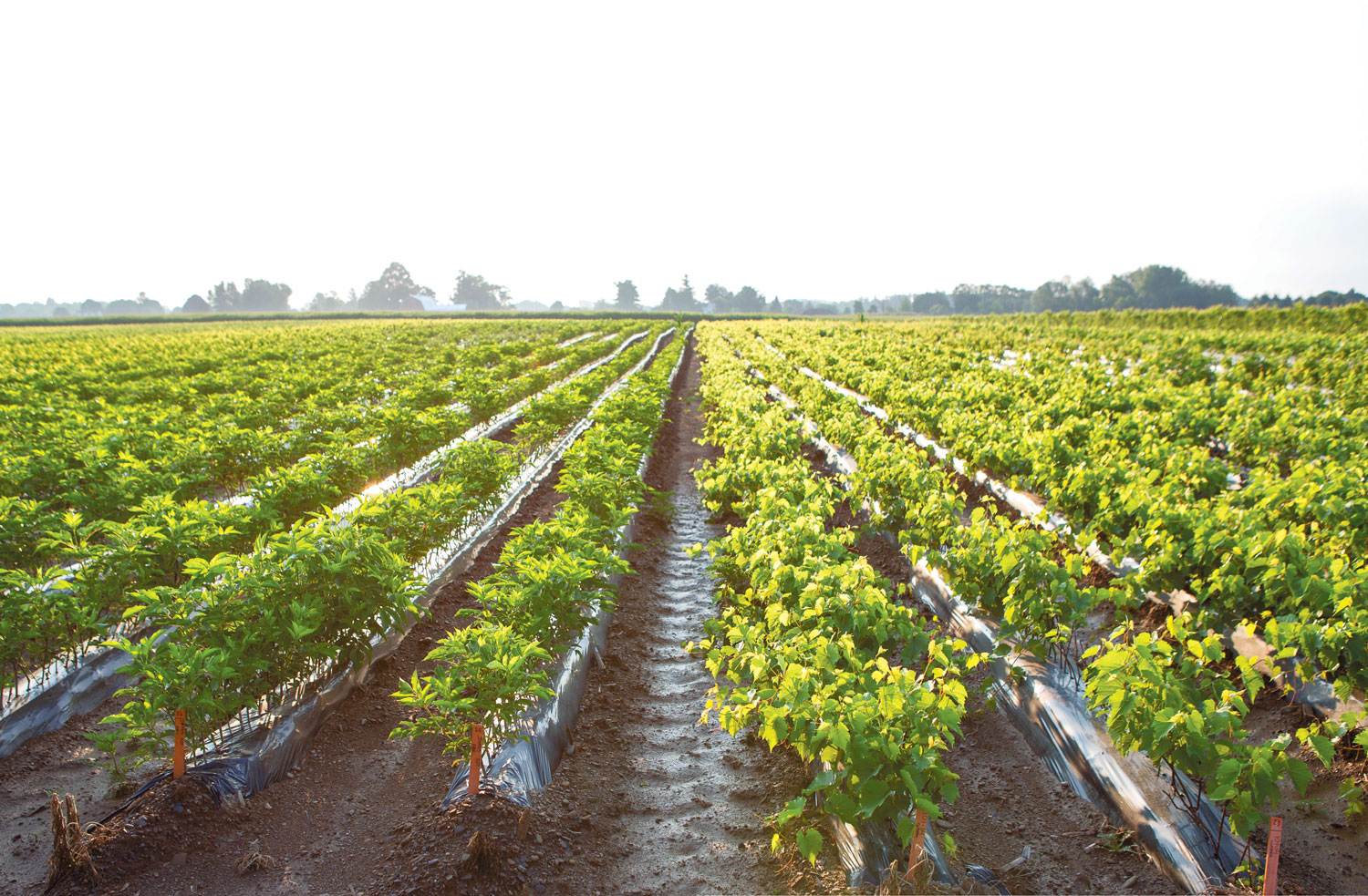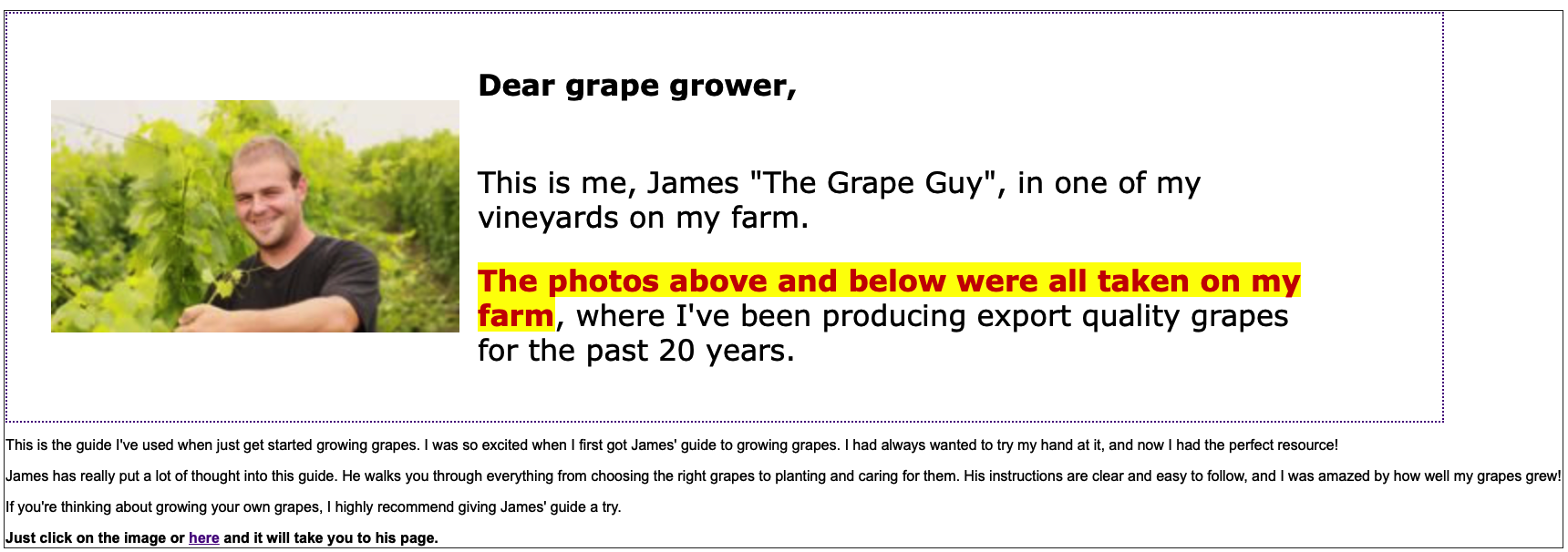The taste of your wine is mostly dependent upon the quality of your grapes.
That means the soil you work with will essentially express itself in the wine you make.
Preparing Your Soil

First you must understand that soil requirements vary from region to region. A professional can evaluate and make certain recommendations based upon your soil condition. However, most regions in the world are supported by extensive agricultural departments that can be of immense help to you.
What does this mean to you, well don’t make the mistake of adding amendments to your soil without knowing what is in your soil. Have the appropriate local government analyze a soil sample for you. It’s silly to even try and guess. Adding nutrients is easy if necessary. Removing unwanted excess nutrients is nearly impossible.
pH balance, Nutrients, and Organic matter
Consider this, a pH between 6.0 and 6.5 is optimum for vine nutrient intake. You can incorporate lime if your soil is acidic (meaning anything lower then 6.0). If your soil is basic (higher then 7.0) you may need to find rootstock that has been adapted to limestone soil conditions.
Grape vines don’t need much to feed on and they are fairly adaptable. Seek professional advice if your soil test is showing nutrient deficiencies. Adding the wrong amendments can have a significant impact on your vines. For example, organic matter over two percent may cause excessive unwanted vine and leaf growth in certain regions.
The Vineyard Layout
In most vineyards the Grape vines are planted in rows. Your vineyard layout will most likely depend upon the parcel of land you have to work with. You should consider the width, length, and direction of your vine rows.
Row direction and Vine spacing:
Plant your vines in rows for best airflow and maximum sunlight. The direction of your rows is largely dependent upon your available space and slope. If you can, run your rows North and South for maximum sunlight capture. And if you are in a warmer climate you may consider slightly angling them Southwest to Northeast to reduce intensity. This is not hugely important; it’s just a consideration of adapting when possible.
Space the rolls so that there is enough room to work comfortably. A good rule of thumb is to keep a minimum of 5′ to 6′ between rows. Placing you rolls too close to one another prevents sunlight penetration and air circulation causing leaves to mildew after heavy rains. Within each row you should also consider spacing between each vine.
This should be based upon how vigorous your chosen Grape vine variety is, soil fertility and climate conditions. Hot climates with an abundance of rainfall encourage vine growth. Growers space vines anywhere from under 3′ to over 8′. Space the individual vines at least 6′ apart in regions where vigorous growth occurs. Spacing your vines closer together may be more appropriate in dry regions with poorer soils.
Grape Planting

Once you have made your decisions concerning layout and your chosen grape variety, the fun begins. It’s time to get your hands dirty. This is why grape growing is so exciting.
Not only do you use your intellect and wisdom, you are also involved in healthy physical activity.
Seven repository employees and four student assistants planted 400 grape plants over three days at Wolfskill Experimental Orchard, in Winters, CA.
Planting season, Vine prep, and Vine Planting
Get motivated and start plantings in early spring if your climate is suited for it. Don’t worry if an early spring frost should occur, dormant buds and vine stock will not be damaged. Early spring rains will benefit vines and give them a chance to settle in before the growing season begins.
If you have comfortable mild winters then you may consider fall plantings. This can help you avoid extreme temperatures in hot climate areas.
Order your vines from nurseries who sell year old bare-rooted dormant vines. These are vines that the nurseries have grown in their own fields. Nurseries establish root systems from cuttings and grafts. They ship them bare rooted. Once your vines arrive be sure to check and see if they are still moist. Most nurseries guarantee their stock.
Never buy two year old stock from the nursery. Always stick with one year old bare rooted stock. Two year old stock is usually a sign of weakness in the first growing year and kept to sell later the following year once they reach a reasonable size. Trust me, you don’t won’t these two year old plants.
Be proactive once you receive your vines. To prevent them from growing in the box do not store your vines in temperatures exceeding 55ºF for more than a week or two. Vines are usually sold in early spring. Keep your vines moist until you are ready to plant them by spraying them.
One more thing, do not let them sit in standing water.
Nurseries trim their vines before shipping them. However, you may consider trimming roots to an even length around 8″. This will allow your root system to be more uniform within the planting hole.
Planting your vines is fairly simple and straightforward. Dig a hole large enough to comfortably contain the root system. If you have grafted vines from the nursery be sure to keep the graft union 2-4″ above ground level. If your vines are not grafted than plant the vines so that buds are not covered with soil.
Carry your vines in a bucket of water while you are planting. Position your vine in the hole while you tamp the soil down lightly removing any air pockets with your hands. Leave a slight depression around the base for easier watering. There is no need to add water to dormant vines if the soil is damp.
You will need good soil moisture after your vines begin to show signs of life. This means that if rainfall is weak you will need to add water to your vines. If you are lucky and get a few good soaking showers, watering your vines may not be necessary. Sandy soils need to be watered more frequently. Over watering could be a concern in clay based soils since clay absorbs and retains water longer.


